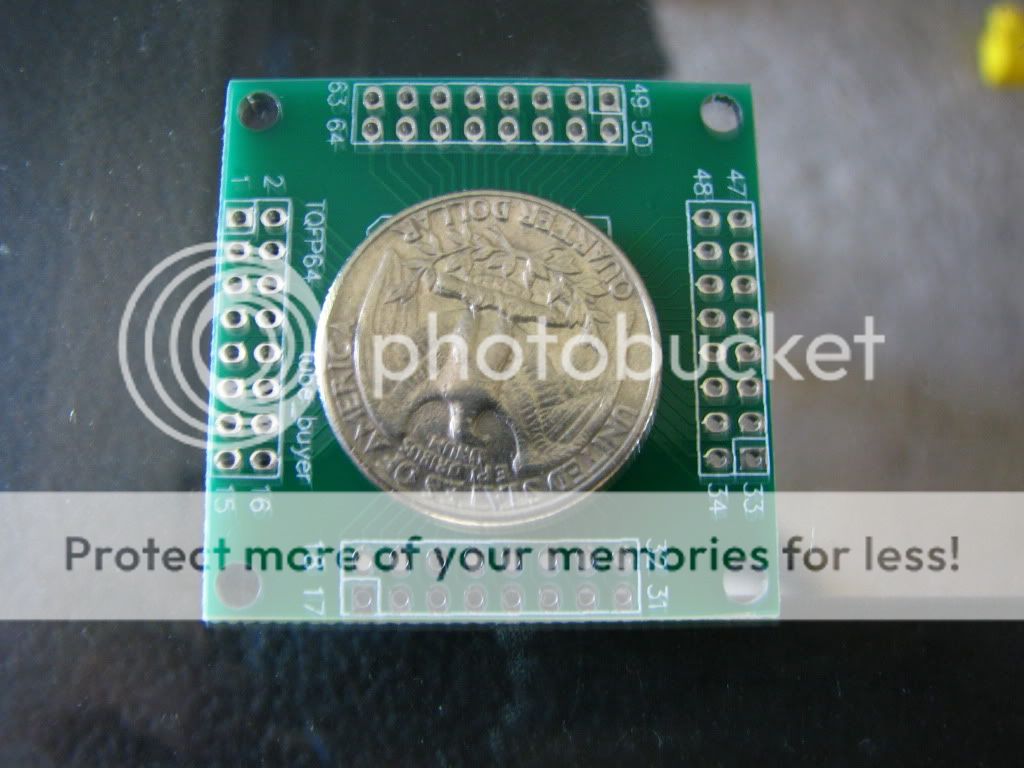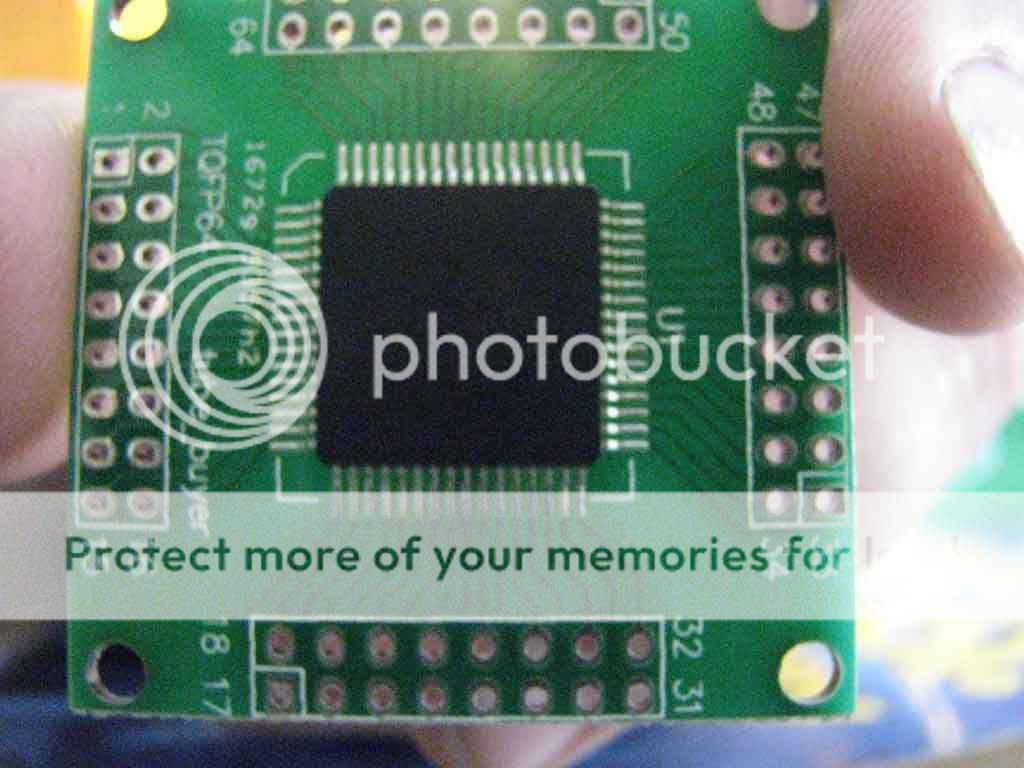Ok, finally some progress. In the hope of making this project as user-friendly as possible, I attempt to find a means to solder this thing without the need for special materials or equipment. Unfortunately, due to the nature of the hardware, it's impossible without needing SOMETHING. But, I did manage to get this done using a 10 dollar Harbor Freight item! An adjustable-temp, adjustable-speed heat gun.
Materials required:
atmega128L
The PCB adapter board for the '128
Regular paste flux for ROSIN soldering
Soldering iron, preferably fine tip
Heat gun
Latex gloves
Tweezers
Mask
Instructions:
First, thoroughly cover the pads with flux - don't be shy, it's getting cleaned up after we're done anyway. Next, get your soldering iron and get a bead of solder on the end of the tip. Then, SLOWLY drag the tip along the pads. The solder will automatically flow from the tip to the pad, and shouldn't need much coaxing to get where it needs to be, if any. You will be burning flux as you do this, don't breathe it in. Use a fan or a mask.
Not a whole lot of solder is required; you'll be able to see the solder flow onto the pad, and what little you see is all you need. Once you've completed all four sets, you have an option: you can either use alcohol to clean the flux residue off, or you can use paper towels. The paper towel method has a benefit of leaving some sticky residue, which makes placement a pain in the rear BUT, has the added benefit of helping keep the processor in place. Either way, once you're done cleaning the residue off the board, find a suitable, HEAT RESISTANT base to place the PCB onto. I used my flat top stove.
Next, carefully place the processor onto the pads - NOTE THE POSITION OF PIN 1. It's not catastrophic if you solder the processor backwards, but the pin numberings will be wrong, and you will have to continually correct for the mistake. Once you have made sure all pins are lined up appropriately, get out the heat gun.
Turn the heat setting all the way up, and place the speed on high. Let it run for about 2 or 3 minutes so that it has plenty of time to heat up completely. Now, start about three feet above your PCB, and slowly move the gun downwards until you are about half an inch above the processor. If you've a steady arm and hand, you should not have a problem with the air from the gun moving the processor - the air flow should be DOWN at all times, but turbulence can cause problems. If the processor moves, reset the processor and try again.
Alternate between staying on the chip for 15 seconds, then removing heat for 15 seconds, then reapplying heat for 15. I repeated three times, and part was successfully soldered.
Here's the result:
It came out very clean, I was quite pleased with the results. I will be doing another PCB this evening, I will be making a video of that build, and will merge this reply with the original post.





